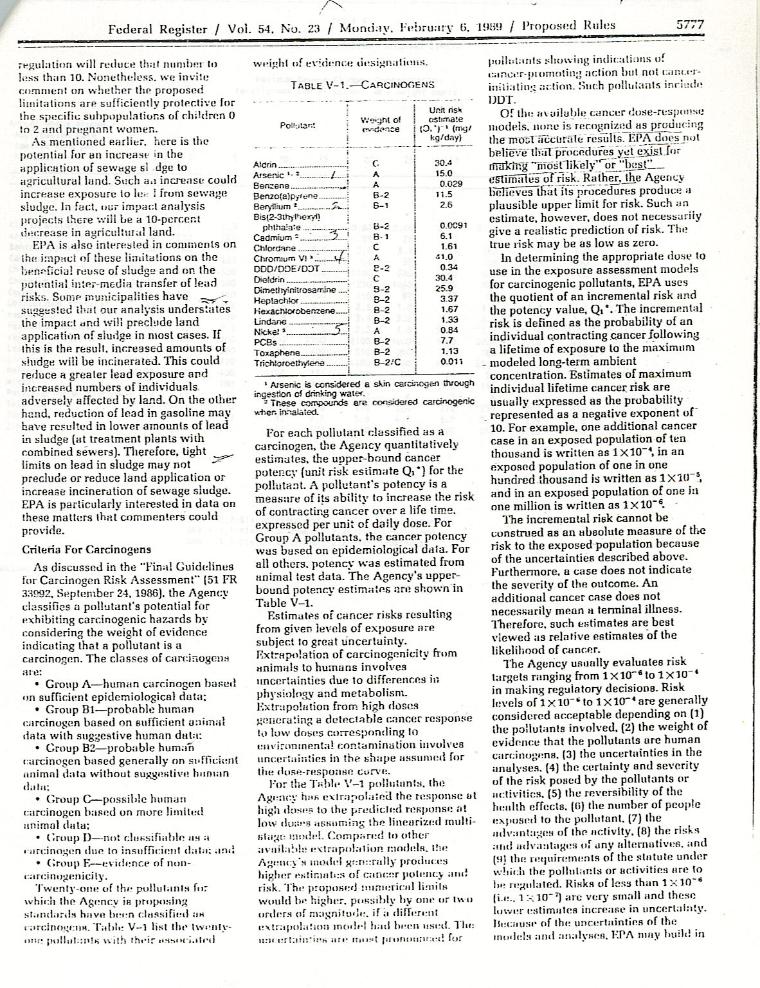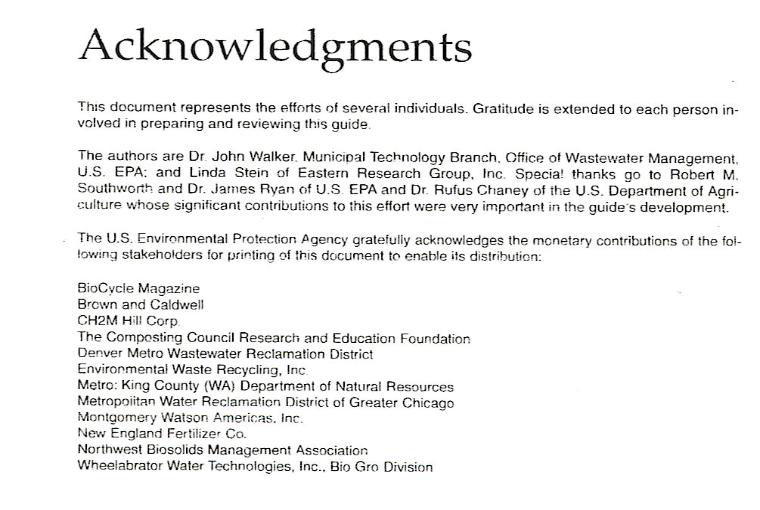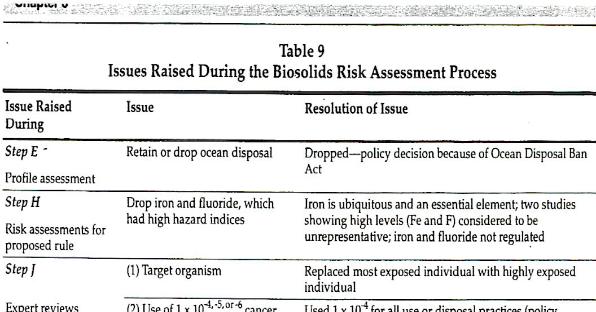DID SLUDGE EXPERTS SET OUT TO KILL US?
Bad public Relations Campaign
Parts of the page loads slowly.
EPA claims chemicals in sewage sludge/Biosolids are not hazardous.
The 1991 part 258 sludge/Biosolids Co-Disposal regulation lists 220 hazardous
chemicals.
Bad public Relations Campaign
Parts of the page loads slowly.
EPA claims chemicals in sewage sludge/Biosolids are not hazardous.
The 1991 part 258 sludge/Biosolids Co-Disposal regulation lists 220 hazardous
chemicals.
There are three parts to this PR campaign. Part 2 Part 3
The CWA definitions are biased toward protecting organisms in, on, or near water.
Humans and animals fall into that organism category. Under the CWA sewage and
sludge is a pollutant. Under the sludge regulation pollutants are everything in
sludge that will kill us -- and -- none were addressed in the regulation as a risk to
human life. See Step J of Table 9 for definition of target organism.
40 CFR 503.9(t) Pollutant is an organic substance, an inorganic substance, a
combination of organic and inorganic substances, or a pathogenic organism that,
after discharge and upon exposure, ingestion, inhalation, or assimilation into an
organism either directly from the environment or indirectly by ingestion through the
food chain, could, on the basis of information available to the Administrator of EPA,
cause death, disease, behavioral abnormalities, cancer, genetic mutations,
physiological malfunctions (including malfunction in reproduction), or physical
deformations in either organisms or offspring of the organisms.
The following documents document show how much danger the public health has been placed
in by a few SLUDGE EXPERTS in the EPA Office of Water.
The first document from a Cornell Scientist points out that the proposed sludge regulation is a
proposal against human nature. He notes the damage to property values. He also notes an
alternative to permanently polluting the land and water.
The second document is a list of the cancer causing chemicals to be found in sludge
published in the 1989 proposed sludge regulation. Five of the chemicals are cancer causing
(airborne) agents by inhalation. Yet, EPA states there have never been any victims.
The third document is a page out of EPA's 1995 book on RISK Assessment which states the
organic chemicals were not included for various reasons, and EPA Office of Water did not
consider any of the inorganic chemicals (metals) to be cancer causing agents.
The fourth document is from the 1993 preamble to the sludge regulation in which EPA Office
of Water states it does not have enough information on most of the dangerous chemicals to
attempt to regulate them. However, EPA points out that does not mean they are safe.
Yet, EPA Office of Water has paid (blackmailed) the Water Environment Federation to
lie to us and claim there is forty years of sound science behind the regulation.


The EPA's own research, which is stated in the preamble to the new (1989) proposed (Coded
Federal Regulation Section 40, Parts 257 and 503) sludge regulation, has documented in
addition to the toxic heavy metals, a list of 25 primary pathogens in sewage sludge. Among
these are: Also see complete list with disease update, which EPA claimed only caused
gastroenteritis. EPA neglected to list some really bad bacteria and viruses.
1) five bacteria pathogens (Campylobacter, Escherichia, Salmonella, Shigetla, and Vibrio
Cholerae),
2) nine viruses pathogens (Entroviruses, Poliovirus, Coxsackieviruses, Echovirus, Hepatitis A,
Norwalk and Norwalk like viruses, Reovirus, and Rotavirus),
3) five helminth pathogens (among them are Hookworms, Tapeworms, and Nematode worms),
4) five protozoans pathogens (Toxoplasma gondii, Balantidium, Entamoeba histolyca, Giardia
lambia, and Crytosporidium), and
5) one fungi pathogen (Aspergillus).
Most of these pathogens are very deadly to humans and animals. Although the bacteria
pathogens Campylobacter Jejuni and Escherichia primarily cause a relative mild case of
diarrhea, Salmonella, Shigetla and Vibrio cholerae effect the gastrointestinal tract and can be
fatal.
Of the nine viruses, Entroviruses or Picornaviruses (152 species) pathogens can cause
gastrointestinal problems, respiratory problems and can also be fatal. Poliovirus (3 species)
pathogens cause inflammation of the grey matter of the spinal cord. Coxsackievirus A (23
species), B (6 species) pathogens are mostly mild, but they can cause inflammation of the heart
in newborns. While Echovirus (31 species) pathogens primarily cause inflammation of the heart,
spinal cord and brain, Hepatitis A virus pathogens cause liver problems and can lead to death.
Norwalk viruses and Norwalk like virus pathogens cause mostly diseases of the gastrointestinal
tract and Rotavirus causes acute gastroenteritis.
The five Helminth pathogens (primarily, Hookworms, Tapeworms and Nematode Worms) cause
damage to vital organs, brain, retina vessels, liver, lung and heart.
The five Protozoan pathogens cause intestinal, respiratory, and liver problems.
The one fungi pathogen, Aspergillus, causes inflamed tissues in bronchi, lungs, aural canal, skin
and membranes of the eye, nose or urethra (Federal Register (FR), 54, P.5829 & Thomas 1988)
GUIDE TO THE PART 503 RISK ASSESSMENT



Guide to the 503 Risk Assessment
